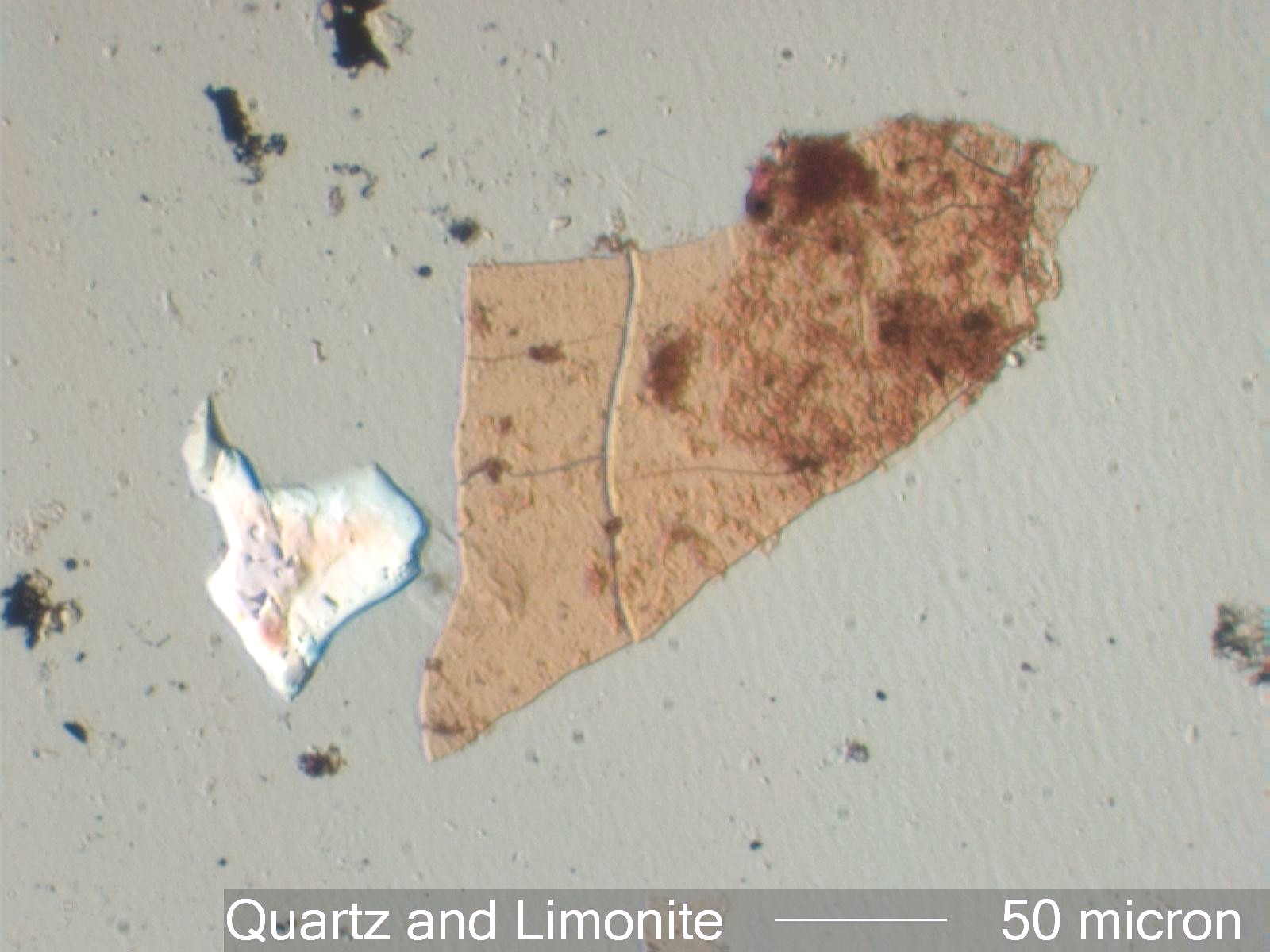Limonite and Quartz
Limonite is the orange particle in this field of view. The white particle is a newly crushed quartz particle. These particles are from a tranformer oil sample.
Definition/Function:
Limonite is FeO-OH-nH2O. It varies in color from very pale yellow to orange-brown, depending on the amount of water in the matrix. The flakes often contain darker, less hydrated nuclei. The form of the limonite particle reflects the shape of the interface between the oil and the water layer. This flat sheet indicates a very flat, smooth interface. Limonite is amorphous or cryptocrystalline but as it looses more water the nuclei convert to a more evident crystal structure. There are at least five forms of FeO-OH that have distinctive crystal structures. They include lepidocrocite, goethite, and others.
The quartz in this image is probably a filler or bulking agent from a polymer used in the Transformer The quartz particle is sharply angular and shows no weathering. It is a very pure form of quartz with no inclusion other than water. The Inclusions seen in the particle are vacuum chambers with small drops of water that would fill the cavity with water vapor at the temperature at which the crystal grew. This is a commercial grade of quartz and not a random natural mineral.
Significance in the Environment:
Free water is accumulating on the surface of sheet iron and is corroding the iron. Growth of crystal sites in the limonite film indicate that this has been occuring for at least many months.


